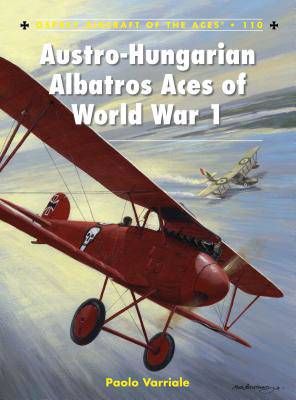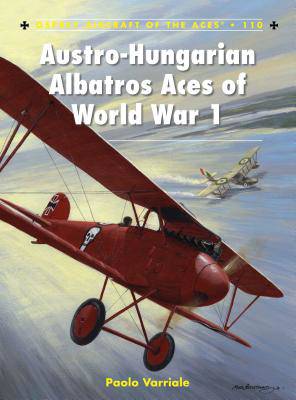
- Afhalen na 1 uur in een winkel met voorraad
- Gratis thuislevering in België vanaf € 30
- Ruim aanbod met 7 miljoen producten
- Afhalen na 1 uur in een winkel met voorraad
- Gratis thuislevering in België vanaf € 30
- Ruim aanbod met 7 miljoen producten
Zoeken
Omschrijving
Austro-Hungarian industry produced a series of poor fighter types such as the Phönix D I and Hansa-Brandenburg D I during the early stages of the war, and it was not until licence-built examples of the battle-proven Albatros and D II and D III began to reach Fliegerkompagnien, or Fliks, in May 1917 that the fortunes of pilots began to look up. Unlike the German-built Albatrosen, which initially suffered wing failures in flight, the Oeffag aircraft were far more robust than German D IIs and D IIIs. They also displayed superior speed, climb, manoeuvrability and infinitely safer flight characteristics. Such attributes were used to the full by all the leading Austro-Hungarian aces, including Brumowski, Arigi, Kiss and Linke-Crawford, who fought Italian pilots in Hanriots and SPADs, as well as British pilots in Camels and Bristol Fighters. The exploits of Austro-Hungarian aces were initially brought to the attention of English-speaking readers in the 1980s through the pioneering work of Martin O'Connor. An additional 30 years of additional research has allowed Paolo Varriale to integrate and update his work, rectifying some inaccuracies and adding new details and a large number of unpublished photographs. The careful crosschecking of Allied sources with Austrian and German records form the basis for a detailed reconstruction of the dogfights fought by the leading aces. This painstaking research allows many myths to be exposed and errors to be corrected. The book will cover the use of Albatros fighters on the Italian and Eastern Fronts, from the fighters' initial arrival in mid 1917 through to the last days of war. It will also chart the careers of the Austro-Hungarian aces that flew the D II and D III, their successes and their defeats, with additional information about their personal background and their post-war lives in the nations born from the collapse of the Hapsburg Empire. Some 49 pilots achieved acedom during World War 1, and the bulk of these pilots made their claims flying the 586 Oeffag-built Albatrosen.
Specificaties
Betrokkenen
- Auteur(s):
- Illustrator(s):
- Uitgeverij:
Inhoud
- Aantal bladzijden:
- 96
- Taal:
- Engels
- Reeks:
- Reeksnummer:
- nr. 110
Eigenschappen
- Productcode (EAN):
- 9781849087476
- Verschijningsdatum:
- 18/12/2012
- Uitvoering:
- Paperback
- Formaat:
- Trade paperback (VS)
- Afmetingen:
- 180 mm x 246 mm
- Gewicht:
- 294 g

Alleen bij Standaard Boekhandel
+ 50 punten op je klantenkaart van Standaard Boekhandel
Beoordelingen
We publiceren alleen reviews die voldoen aan de voorwaarden voor reviews. Bekijk onze voorwaarden voor reviews.











